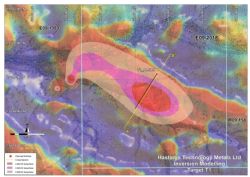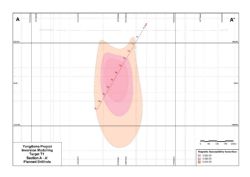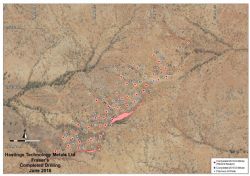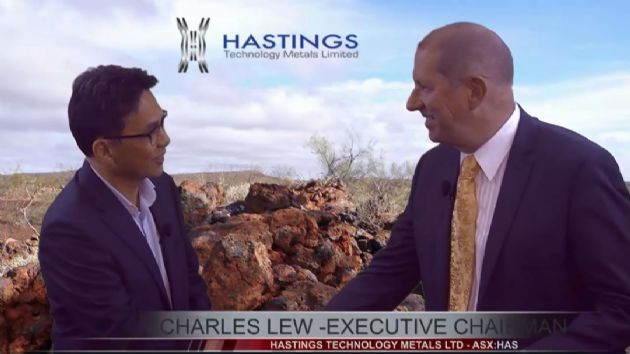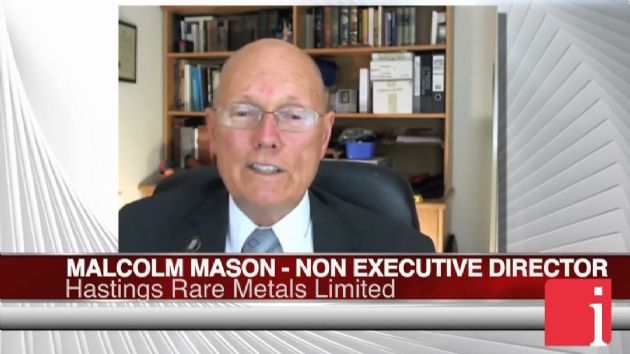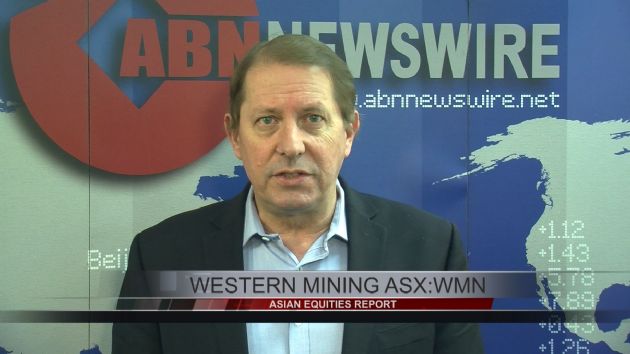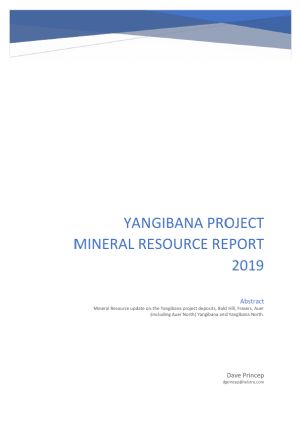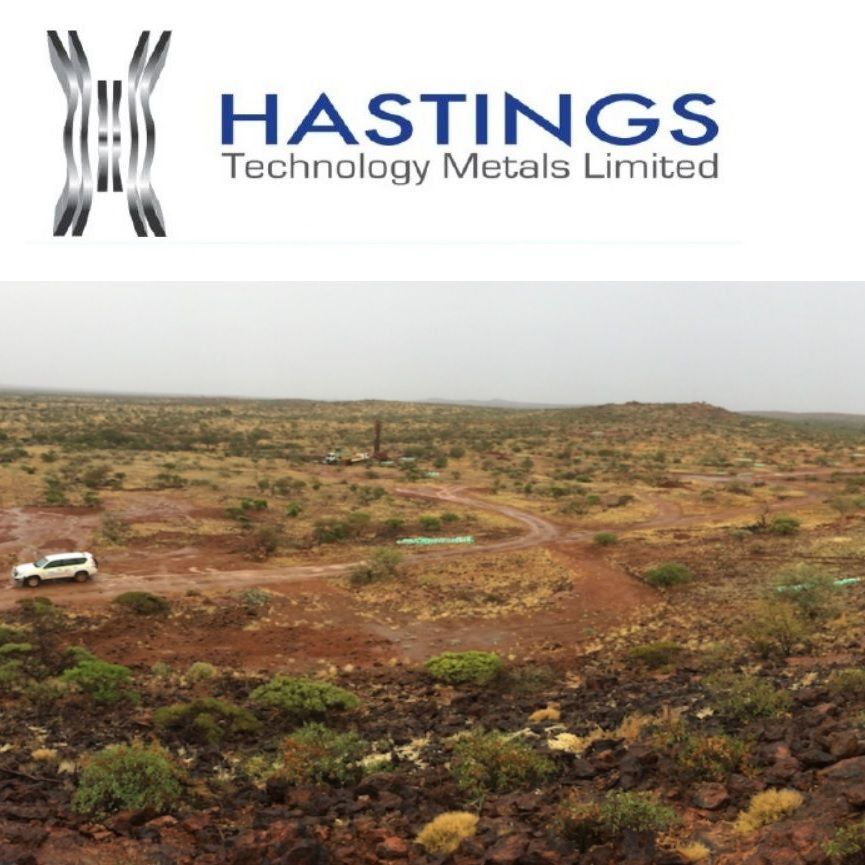
Major Aeromagnetic Target Identified at Yangibana
Sydney, Aug 8, 2018 AEST (ABN Newswire) - Hastings Technology Metals Limited ( ASX:HAS) is pleased to announce the results of a detailed interpretation completed by independent consultants Southern Geoscience Consultants (SGC) on specific targets indicated in its earlier assessment of the Company's 2016 aeromagnetic and radiometric survey data. The interpretation has identified a major aeromagnetic anomaly that warrants drill testing, and indicated potential extensions of the defined resources at Auer and Auer North.
ASX:HAS) is pleased to announce the results of a detailed interpretation completed by independent consultants Southern Geoscience Consultants (SGC) on specific targets indicated in its earlier assessment of the Company's 2016 aeromagnetic and radiometric survey data. The interpretation has identified a major aeromagnetic anomaly that warrants drill testing, and indicated potential extensions of the defined resources at Auer and Auer North.
- Interpretation of aeromagnetic data identifies a major anomaly near Fraser's deposit
- Dimensions 1km by 800m by 400m
- Anomaly strength indicates probable magnetite-rich body
- Potential extensions to Auer and Auer North identified
- Assay results from infill drilling at Fraser's confirm expectations with results including
o 9m at 3.03%TREO including 1.22% Nd2O3+Pr6O11
o 9m at 2.38%TREO including 1.01% Nd2O3+Pr6O11
o 8m at 1.51%TREO including 0.59% Nd2O3+Pr6O11
o 6m at 2.87%TREO including 1.16% Nd2O3+Pr6O11
o 4m at 2.80%TREO including 1.15% Nd2O3+Pr6O11
- Drilling to increase Indicated Resources and thence Probable Reserves commenced at Auer and Auer North
INTRODUCTION
Results from recently-completed infill reverse circulation (RC) drilling at the Fraser's deposit are in line with expectations. RC and diamond drilling are now under way to increase Indicated Resources and thence reserves at the Auer and Auer North deposits.
AEROMAGNETIC ANOMALY
SGC's recent work has concentrated on a number of targets in the Fraser's Southwest area being the area that lies between Fraser's deposit in the east and the Auer and Auer North deposits in the west (see Figure 1 in link below). The major anomaly occurs predominantly in the southern corner of E09/2018 and has been modelled with a significant target as shown in Figures 2 and 3(see link below).
The detailed assessment of this feature has defined an anomalous magnetic feature with a strike length of approximately 1km with a strong magnetic susceptibility. The modelled feature has a depth extent of approximately 800m extending from surface, and a width of approximately 400m. This body has a higher intensity core (darker pink in Figure 3) (see link below) with a strike length of approximately 750m, a depth extent of approximately 650m (from 60m below surface), and a width of approximately 300m.
The strength of the anomaly in the Yangibana environment suggests the presence of a large magnetite-rich body, potentially similar to the magnetite-rich units that host portions of the known rare-earths deposits nearby.
Surface assessment has located evidence of ironstone and samples have been taken for analysis.
A conceptual hole shown in Figures 2 and 3 (see link below) is planned to provide a first test of the anomaly.
SGC also undertook interpretation of the aeromagnetic data further west, identifying potential extensions of 900m to the north of the current limit of the Auer North deposit and 1,200m to the south of the current limit of the Auer deposit.
INFILL DRILLING RESULTS
Assay results have been received for all RC holes drilled at Fraser's deposit as part of the programme to deliver a large composite sample representative of the Bald Hill and Fraser's mineralisation for further metallurgical testwork (see Figure 4 in link below). Results have been in line with expectations with best results shown in Table 1 (see link below). Details of hole coordinates and assays are shown in Appendices 1 and 2 (see link below).
The important Nd2O3+Pr6O11:TREO ratio ranges from 39% to 45% (other than FRRC145), in line with the November 2017 JORC Resource average of 42%. This ratio effects the proportion of the Company's target oxides of neodymium and praseodymium to TREO in the planned mixed rare earths carbonate product.
RESERVE EXPANSION DRILLING
On completion of the programme to recover additional metallurgical samples, both RC and diamond rigs are now focused on a programme to increase Measured and Indicated Resources and then, incorporating additional metallurgical, geotechnical and mining studies, to increase total reserves at the Project.
The current drilling programme is centred on the Auer and Auer North deposits with the intention of further adding to the Measured and Indicated Resources at these deposits. Geotechnical and geochemical work, and metallurgical testwork are all progressing with the aim of completion of mining studies and the establishment of further increased Probable Reserves by the end of 2018.
TERMINOLOGY USED IN THIS REPORT
Total Rare Earths Oxides, TREO, is the sum of the oxides of the light rare earth elements lanthanum (La), cerium (Ce), praseodymium (Pr), neodymium (Nd), and samarium (Sm) and the heavy rare earth elements europium (Eu), gadolinium (Gd), terbium (Tb), dysprosium (Dy), holmium (Ho), erbium (Er), thulium (Tm), ytterbium (Yb), lutetium (Lu), and yttrium (Y).
To view tables and figures, please visit:
http://abnnewswire.net/lnk/3C96NIY7
About Hastings Technology Metals Ltd
 Hastings Technology Metals Ltd (ASX:HAS) (FRA:5AM) is advancing its Yangibana Rare Earths Project in the Upper Gascoyne Region of Western Australia towards production. The proposed beneficiation and hydro metallurgy processing plant will treat rare earths deposits, predominantly monazite, hosting high neodymium and praseodymium contents to produce a mixed rare earths carbonate that will be further refined into individual rare earth oxides at processing plants overseas.
Hastings Technology Metals Ltd (ASX:HAS) (FRA:5AM) is advancing its Yangibana Rare Earths Project in the Upper Gascoyne Region of Western Australia towards production. The proposed beneficiation and hydro metallurgy processing plant will treat rare earths deposits, predominantly monazite, hosting high neodymium and praseodymium contents to produce a mixed rare earths carbonate that will be further refined into individual rare earth oxides at processing plants overseas.
Neodymium and praseodymium are vital components in the manufacture of permanent magnets which is used in a wide and expanding range of advanced and high-tech products including electric vehicles, wind turbines, robotics, medical applications and others. Hastings aims to become the next significant producer of neodymium and praseodymium outside of China.
Hastings holds 100% interest in the most significant deposits within the overall project, and 70% interest in additional deposits that will be developed at a later date, all held under Mining Leases. Numerous prospects have been identified warranting detailed exploration to further extend the life of the project.
Brockman Project
The Brockman deposit, near Halls Creek in Western Australia, contains JORC Indicated and Inferred Mineral Resources, estimated using the guidelines of JORC Code (2012 Edition).
The Company is also progressing a Mining Lease application over the Brockman Rare Earths and Rare Metals Project.
Hastings aims to capitalise on the strong demand for critical rare earths created by the expanding demand for new technology products.
| ||
|




